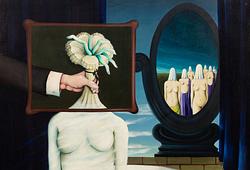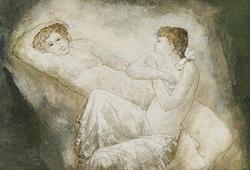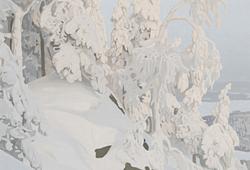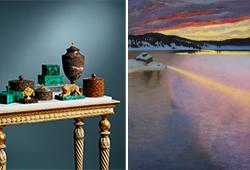Christer Strömholm
"Paris 1962".
Fine Art Edition 2015, printed by Christer Strömholm Estate, stamped verso. Edition 21/25. Total edition of 25 + 5 AP. Fine art baryt print, image 23.5 x 17.5 cm.
Alkuperä - Provenienssi
Tom Böttiger Collection, Stockholm.
Kirjallisuus
Christer Strömholm - CHR", 1998, illustrated full-page p. 27.
Lourdes Peracaula (ed.), "Christer Strömholm", 2001, illustrated p. 71.
Joakim & Jakob Strömholm, "Christer Strömholm 1918-2002, On verra bien", 2002, illustrated full-page p. 35.
Moderna Museet, "En annan historia", 2011, illustrated pl. no 96.
Joakim Strömholm (ed.),"Post Scriptum -Christer Strömholm", 2012, illustrated on full-page p. 99.
Muut tiedot
Christer Strömholm was an adventurer and in many ways a controversial figure who broke away from his bourgeois background to volunteer in the Spanish Civil War, the Finnish Winter War and the Norwegian Resistance. After World War II, he moved to Paris and started at the Academy of Fine Arts. Photography soon became Strömholm's main form of expression, and his images of prostitutes, transsexuals and outcasts from the streets of Paris were perceived by many as provocative and frightening, but at the same time, they were highly appreciated and influential.
Strömholm represents classic black and white photography and belongs to a generation of photographers who went out into society and turned the camera into a personal means of artistic expression. In the 1960s he founded the Photo School in Stockholm where over 1200 students graduated between 1962-1974. Strömholm taught many of today's most famous photographers, including Dawid, Anders Petersen and Gunnar Smoliansky. The aim was to train personally creative photographers. Strömholm had an excellent ability to bring out his students' self-confidence and placed great emphasis on teaching students to relate to their images. It was the discussions about the image and the feeling in them that were most important at the school; the technical aspect was seen almost as a necessary evil. Christer Strömholm was appointed Professor of Photography in 1993 and received the Hasselblad Prize in 1997.
The main theme of his work became the search for and exploration of people's true identity. His documentary images from his project in 1950s Paris, 'The Friends of Place Blanche', are now legendary.
Christer Strömholm's images of post-war Europe show the poverty and human debris left behind by the war. In 1949, he found himself in the Jura Mountains on the border between Switzerland and France. There he took some pictures of rural children, including the boy proudly showing off his snail farm and the two peasant girls posing in the barn with the sun's rays as a halo around their braids. Among the many other tender portraits of young children he encountered on his travels is the image of the two little boys who, with a curious yet serious expression, meet the photographer's gaze in the midst of play on a street in Paris. The image is typical of Strömholm's many portraits of children, images with a psychological depth that are all characterised by a loneliness and isolation that can perhaps be found in Strömholm's own childhood.
Strömholm's iconic image of the French little boys is in the Moderna Museet collection and was shown in the exhibition 'En annan historia' in 2011.




































